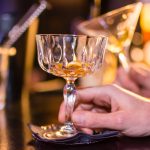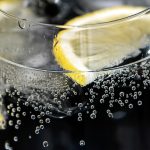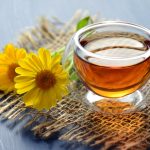Embarking on a quest to understand the delicate dance between enjoying a casual drink and tipping over into the realm of inebriation, especially with a popular choice like White Claw, involves a surprisingly complex interplay of factors. Our comprehensive guide, “How Many White Claws to Get Drunk?”, is meticulously crafted to navigate this nuanced landscape. With an unwavering commitment to accuracy and detail, we delve into the science of alcohol absorption, the influence of individual biological factors, and the unique characteristics of White Claw that contribute to its effects on the body. Whether you’re a seasoned social drinker curious about your favorite beverage or a newcomer eager to understand your limits, this article stands as a beacon of expertise. We unravel the mysteries of alcohol content, serving sizes, and how these interact with personal tolerance levels, ensuring you can enjoy your social outings with confidence and safety. Join us as we explore not just the “how many,” but the “why,” offering insights that promise to enlighten, entertain, and perhaps even surprise you. Prepare to embark on a journey that will not only quench your thirst for knowledge but also inspire a more informed and mindful approach to enjoying White Claw responsibly.
A Doctor’s Viewpoint on the Hydrating Benefits and Lower Hangover Risk of White Claw

According to Dr. Niket Sonpal, a New York based internist and gastroenterologist, there are some advantages to choosing hard seltzers over other alcoholic drinks. “Because spiked seltzers like White Claw have less natural sugar than beer or cocktail mixes, you’re at a lower risk for a bad hangover the next day,” Dr. Sonpal explains. “The bubbles also help you absorb water more quickly, so you stay hydrated as you drink.”
This hydrating quality is important, as dehydration is one of the major causes of hangover symptoms like headache and nausea. The lack of sugary additives also prevents spikes in blood sugar, which can exacerbate next-day misery.
Additionally, Dr. Sonpal points out that most hard seltzers like White Claw contain no congeners – toxic chemical byproducts of fermentation found in other brewed beverages. Congeners are thought to contribute to hangovers, so avoiding them can lessen the chance of regretting those extra drinks the next morning.
One Woman’s Experiment: Determining Drinks to Reach a .08 BAC
To directly test how easy it is to get drunk on a hard seltzer, Instagram lifestyle influencer Loryn Powell conducted an enlightening social experiment. She tested popular alcoholic beverages in a 16 part “How Many Drinks to .08?” series on her account.
To get drunk on White Claw, the number of cans needed varies depending on factors like body weight, metabolism, and alcohol tolerance. For first-timers, it might take around 2-3 cans for the average woman and 3-4 cans for the average man to reach the legal limit. Generally, consuming about 4-5 cans of White Claw is estimated to lead to intoxication equivalent to a BAC of .08. However, individual factors play a significant role in determining the exact number of cans needed to get drunk. It’s advised to drink responsibly and be aware of your alcohol capacity to avoid negative consequences.
However, Powell cautions that your personal tolerance can vary greatly based on your metabolism, body weight, gender, and other considerations. Her light weight of 115 pounds certainly contributed to feeling effects faster. Still, the results highlight the unpredictability of alcohol absorption between individuals and types of drinks.
The Science Behind Why Carbonated Drinks May Enter Your Bloodstream More Quickly
There are a few scientific reasons why sweet, fizzy beverages like hard seltzers can hasten alcohol absorption compared to other options. According to pharmacologist Dr. Ray Lipicky, carbonation speeds passage through the stomach into the small intestine, allowing you to feel effects sooner as booze swiftly enters the bloodstream.
Additionally, the fructose sugar commonly added to flavored seltzers results in a faster spike of alcohol in the blood compared to glucose-based carbs in beer. The lack of protein and fat found in many cocktails or wine slows down alcohol absorption – but spiked bubbly waters contain neither.
One study published in Alcoholism: Clinical & Experimental Research tested vodka mixed with sugarless soda against the same vodka with regular soda in human participants. The sugar-sweetened carbonated vodka resulted in a breath alcohol peak 25% higher than the sugar-free version, despite the same alcohol dosage.
So if you’re looking to gently sip drinks over a long period, plain carbonated water with zero sugar may be a better choice than a pre-mixed flavored White Claw or Truly. But overall moderation is still key, as alcohol affects everyone differently depending on the individual.
Consumer Trends: Who is Drinking White Claw and Why?
Part of what launched hard seltzers like White Claw into popularity was the consumer base and lifestyle trends supporting the drink’s rise.
Initially, the low-calorie carbonated waters with alcohol appealed to young female drinkers looking for figure-friendly booze options with less carbs and sugar. White Claw’s marketing played up the drink’s compatibility with staying slim and active.
As the beverage category expanded with increased selection of flavors, more male customers also gravitated toward spiked seltzers as a lighter alternative to heavy craft beers. The minimalistic branding of White Claw also aligned with masculine aesthetic preferences.
Hard seltzers fit conveniently into the millennial focus on health-conscious drinking and cannabis use – providing an alcohol option with no scary ingredients or unwanted additives. For calm social settings like beach days, seltzers proved infinitely more portable and mess-free than wine or cocktail mixes.
Some fans even replaced former vices like soda or juices with hard seltzers for a guilt-free way to enjoy flavored carbonation without heavy sugar. As a modern lifestyle trend, the bubbly waters have permeated fitness culture, outdoor recreation, and streamlined social gatherings.
Short and Long Term Health Considerations of Hard Seltzers vs Other Alcohol
While sparking waters with alcohol offer some advantages over alcoholic alternatives, drinking them still carries both short and long term health risks like any alcoholic beverage.
In the short term, overconsumption of hard seltzers can quickly lead to unsafe intoxication due to the carbonation speeding absorption into the bloodstream. Dehydration and electrolyte imbalances can also occur since the bubbles provide the illusion of hydration without actual nutrition.
Repeated intoxication through binge drinking hard seltzers can damage the liver, kidneys, heart, and brain over time due to alcohol’s toxic cellular effects. The CDC identifies excessive alcohol use as a leading preventable cause of death in the US.
Like any alcoholic drink, alcoholism can develop with chronic abuse of spiked seltzers. Some also express concern that the fruity flavors and fizzy taste profile appeal dangerously to underage drinkers.
Overall moderation, pacing consumption with food and water, and avoiding alcohol if pregnant or on certain medications can help mitigate short term risks. But there are no long term health benefits to drinking hard seltzers versus abstaining completely.
The Far Reaching Economic Impacts of Hard Seltzers on the Beverage Industry
While consumers associate White Claw and other hard seltzers with laid back beach days, the bubbly booze waters have made serious waves economically across the entire beverage industry.
In 2019, harder seltzer sales spiked over 200% to nearly $1.5 billion total, stealing market share from declining beer sales. Industry giant Anheuser-Busch expanded production capabilities to capitalize on the booming seltzer demand. Even craft breweries like Dogfish Head released their own lines of low calorie spiked seltzers.
White Claw maker Mark Anthony Brands became the unofficial industry leader, holding over 50% of the hard seltzer market share in the US by the end of 2019.
With unquenchable consumer thirst and huge sales potential, beverage giants sprint to release evermore flavors, varieties, and brand collaborations – leaving dusty beer executives scrambling to stay relevant. The meteoric impact of fizzy newcomers like White Claw promises to only grow in coming years.
How Hard Seltzers Stack Up Environmentally Against Beer and Wine
With the explosive sales of bubbly hard seltzers, some environmental groups raised concerns about the sustainability of producing billions of aluminum cans each year. Recycling programs specifically target aluminum for its high reusability, which helps mitigate waste.
But compared ounce-for-ounce to glass bottled wine and beer, spiked seltzer cans may have less total environmental impact during production. The lighter aluminum cans require less fossil fuels for transportation than heavy glass.
Anheuser-Busch cites a report that brewing a 6-pack of beer produces 50% more greenhouse emissions than an equal-volume pack of their Bon & Viv Spiked Seltzer brand. So while hard seltzer consumption measured by volume is massive, the product efficiency helps reduce its planetary impact.
Like any consumable good, making mindful purchasing decisions and recycling properly after use remains environmentally wise. But seltzer cans appear to hold sustainability advantages over glass bottled alcoholic competitors.
Legal Perspectives and Tax Implications of the Popular New Drink Category
The meteoric rise of spiked sparkling waters like White Claw also created some scrambling in legal and regulatory realms over how to classify and tax the new product category.
In terms of alcohol volume and production process, hard seltzers essentially function as a flavored malt beverage like beer. But early brand success partly came from defining seltzers as a completely distinct experience from malted drinks, with unique lifestyle branding.
This distinction matters for alcohol tax purposes, as beer and malt beverages face higher excise taxes than wine and spirits in most US states. Governments want their cut of booming seltzer sales, but struggle with appropriately categorizing the fizzy can drinks.
Some states compromised by taxing hard seltzers at a midpoint between beer and soda to account for their unique traits. But ongoing legal deliberations between government regulators and beverage industry lobbyists will likely continue as the category evolves.
The Cultural Significance of Social Media Influence on Hard Seltzer Trends
Alongside economic impacts, the rise of spiked seltzers like White Claw signifies important cultural shifts in how beverage trends spread through viral social media influence.
Instagram lifestyle influencers became the perfect conduit for authentically promoting the low-key drink experience promised by hard seltzer brands. Relatable personalized endorsements inspired exponential consumer interest more quickly than traditional advertisements could.
Viral online videos then cemented hard seltzers as a social media-driven phenomenon. Memes exaggerating White Claw’s popularity led to real life runaway demand as a self-fulfilling prophecy.
This social media cycle of viral trends fueling real world ubiquity points to how online culture now shapes consumer aspirations. For better or worse, no brand can ignore the power of digitally sharable experiences in the evolution of what we eat and drink. Hard seltzers clearly captured the rapidly beating heart of Instagram culture – and happy hour has never been the same.
Perspectives from Addiction Experts, Nutritionists, and Industry Insiders
Beyond surface level trends, it’s important to understand the deeper impacts of hard seltzers on public health and safety from professionals studying alcohol use and nutrition.
Some addiction medicine experts see seltzers potentially worsening alcohol abuse, especially among college binge drinkers or underage youth. “The flavored drinks can accelerate intoxication while disguising the sensation of being drunk,” warns Dr. Michael Miller, medical director of the Herrington Recovery Center.
Yet overall alcohol consumption per capita has dropped over 30% since early 2000s peaks, indicating hard seltzers likely displace other alcohol instead of only adding to it. Regardless, all medical experts emphasize moderation and responsibility when consuming any alcoholic beverage.
From a nutrition angle, registered dietitian Brenna O’Malley cautions that clear liquids provide false hydration, and that vitamin-fortified seltzers should not replace actual fruit and veggies. “The imperceptible alcohol content paired with empty calories can lead to unconscious overconsumption,” she adds.
Analysts within the beverage industry paint a rosier picture, believing spiked seltzers will mature into a stable category, not just a fleeting fad. Selzers now regularly outsell all craft beer brands combined, signaling a permanent segment of the alcohol industry.
Head to Head: How White Claw and Other Hard Seltzers Compare to Beer, Wine, Vodka, and More
Now that we understand the many factors fueling hard seltzers’ popularity, let’s directly compare several leading brands to other alcoholic beverage options using key metrics:
Alcohol Content
- White Claw: 5% alcohol by volume
- Truly: 5% ABV
- Bud Light: 4.2% ABV
- Miller Lite: 4.2% ABV
- Wines: average 11-13% ABV
- Vodka: 40% ABV
Calories
- White Claw: 100 calories per 12 oz can
- Truly: 100 calories per 12 oz can
- Bud Light: 110 calories per 12 oz can
- Miller Lite: 96 calories per 12 oz can
- Red Wine: 125 calories per 5 oz glass
- Vodka: around 100 calories per 1.5 oz shot
Carbs
- White Claw: 2 grams per 12 oz can
- Truly: 2 grams per 12 oz can
- Bud Light: 6 grams per 12 oz can
- Miller Lite: 3.2 grams per 12 oz can
- Red Wine: around 4 grams per 5 oz glass
- Vodka: 0 grams per shot
Cost
- White Claw 12-pack: around $16
- Truly 12-pack: around $15
- Bud Light 12-pack: around $10-13
- Miller Lite 12-pack: around $10-13
- Cheap Wines: around $8-$12 per average 750 mL bottle
- Vodka: $15-$30 per average 750 mL bottle
Flavor Variety
- White Claw: 12+ flavors
- Truly: over 20 flavors
- Bud Light: 8 flavors
- Miller Lite: 4 flavors
- Wines: thousands of varieties
- Vodka: usually unflavored
Based on this comparison, while hard seltzers generally offer low calorie, low carb options with less alcohol than most beers or wines, their cost is higher for the same total alcohol volume. The variety in flavors for most hard seltzer brands beats out beer, but not the near infinite wine varietals.
Conclusion: Hard Seltzers Are More Than Just a Fleeting Fad
As we’ve explored, sparkling waters with alcohol – typically around 5% ABV – provide a lighter, trendier alternative to classic beers, wines, and spirits with their own unique advantages and disadvantages.
While hard seltzers like White Claw offer hydration benefits, convenience, transparency around ingredients, and appeal to health-conscious drinkers, they still carry risks of intoxication and long-term health effects like any alcoholic beverage if misused. Moderation remains key.
But the monumental economic and cultural impacts of spiked seltzers in just a few short years indicate that the bubbly, fruity drinks are far more than a passing fad. Hard seltzers have permanently diversified the alcoholic beverage landscape.
Social media buzz, viral online videos, and internet culture combined to drive real world consumer demand for a new category that resonated with modern drinkers. The trend promises to continue maturing in tandem with evolving consumer preferences.
Regardless of your personal drinking preferences, the meteoric rise of White Claw and similar hard seltzers undeniably signifies a beverage industry disrupted by digitally-native viral marketing and the lucrative power of memes.
Susan Muskat is a professional chef with over 25 years of experience in the culinary industry. After working in some of the most prestigious restaurants in the world, she opened her own restaurant, Moose and Sadie’s, which quickly became a local favorite. Susan is also the author of a blog all about recipes, guidelines, cooking tips, and knowledge from professional chefs. She loves nothing more than sharing her passion for food with others.








